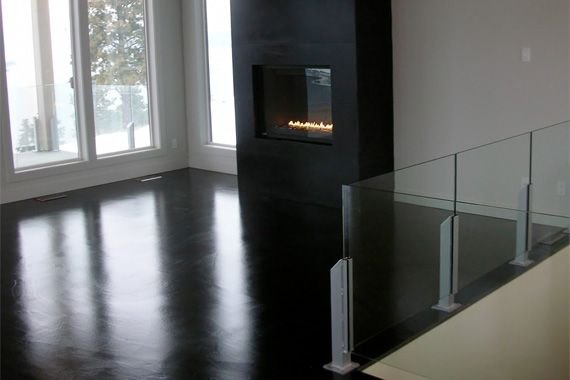Concrete Finishing – Level 2
About this course
Concrete Finishing – Level 2
Module Overview
This module builds on the foundational skills learned in Concrete Finishing – Level 1, focusing on advanced techniques, specialized finishes, and industry best practices. Trainees will develop expertise in surface preparation, decorative finishes, and troubleshooting common concrete defects.
Learning Objectives
By the end of this module, learners will be able to:
Apply advanced concrete finishing techniques.
Execute decorative and exposed aggregate finishes.
Identify and correct common concrete defects.
Use specialized tools and equipment for high-quality finishes.
Understand curing methods and long-term durability practices.
Module Contents
1. Advanced Concrete Placement & Consolidation
Proper concrete placement techniques for slabs, walls, and columns
Vibration methods to eliminate air pockets
Handling high-slump and low-slump concrete
2. Surface Preparation & Finishing Techniques
Bull floating and darbying for initial smoothing
Edging and jointing best practices
Advanced troweling techniques (hand vs. power trowels)
Burnishing for ultra-smooth surfaces
3. Decorative & Specialty Finishes
Exposed aggregate finishes (washing, seeding, grinding)
Stamped concrete patterns & coloring techniques
Stenciled and scored decorative designs
Polished concrete basics
4. Troubleshooting Common Defects
Identifying causes of cracking, blistering, and scaling
Preventing plastic shrinkage and crazing
Repair techniques for surface imperfections
5. Curing & Protection Methods
Moisture retention techniques (curing compounds, wet curing, membranes)
Temperature control in hot/cold weather
Timing for form removal and load application
6. Safety & Best Practices
PPE for concrete finishers
Handling chemicals (sealers, curing agents)
Ergonomics to prevent strain injuries
7. Hands-On Practical Training
Lab exercises on finishing different concrete mixes
Simulated job-site scenarios
Quality control inspections
Assessment & Evaluation
Theory Exam (Multiple-choice & short-answer questions)
Practical Demonstration (Finishing a slab with decorative elements)
Defect Identification & Correction Test
Recommended Tools & Materials
Magnesium floats, trowels, edgers
Power trowels, grinders, stamping mats
Curing compounds, sealers, color hardeners
Personal protective equipment (PPE)
Duration & Delivery
Total Hours: 40–50 hours (mix of theory and hands-on training)
Delivery Methods: Classroom instruction, live demonstrations, workshop practice
This module prepares learners for Concrete Finishing – Level 3 or direct entry into commercial/industrial concrete finishing roles.
Comments (0)
Advanced concrete placement and consolidation techniques aim to achieve dense, homogeneous concrete structures with minimal voids and segregation. This includes using self-consolidating concrete (SCC), which flows and compacts under its own weight, and employing various vibration and compaction methods to eliminate air bubbles. Advanced concrete technology also explores the use of materials like Ground Granulated Blast Furnace Slag (GGBS) to improve strength and durability.
Surface preparation and finishing techniques are essential manufacturing steps that modify a material's surface to enhance its appearance, durability, and functionality. These techniques can involve mechanical, chemical, or thermal processes, aiming to achieve specific surface characteristics like smoothness, corrosion resistance, or aesthetic appeal.
Decorative concrete finishes enhance the aesthetic appeal of concrete surfaces, offering a variety of textures, patterns, and colors beyond the standard plain concrete look. These finishes can be applied to both new and existing concrete, transforming floors, driveways, walls, and countertops into stylish and durable elements. Common techniques include stamping, acid staining, water-based staining, decorative overlays, polishing, and colored concrete.
Common concrete defects include cracking, spalling, scaling, honeycombing, efflorescence, and corrosion. These defects can be caused by various factors, including improper mix design, inadequate curing, freeze-thaw cycles, and corrosion of reinforcement. Troubleshooting involves identifying the type of defect, determining the cause, and implementing appropriate prevention or repair methods.
Concrete curing is the process of maintaining adequate moisture and temperature for concrete during its early stages of hydration, which is crucial for achieving its strength, durability, and resistance to cracking. Protection methods help prevent premature drying, damage from harsh weather, and chemical attack.
Concrete finishing safety and best practices involve a multi-faceted approach, encompassing personal protective equipment (PPE), proper handling of concrete and cement, and awareness of potential hazards. Specifically, workers should wear appropriate gloves, boots, eye protection, and respiratory protection, and be trained in safe lifting techniques. Additionally, maintaining a clean and organized work environment, avoiding spills and debris, and promptly addressing any issues are crucial.
Hands-on practical training for concrete finishers typically involves apprenticeships or vocational programs that combine classroom instruction with on-the-job experience, focusing on skills like concrete mixing, application, finishing, and repairs. This training equips individuals with the knowledge and practical skills to work effectively with concrete in various construction contexts.





